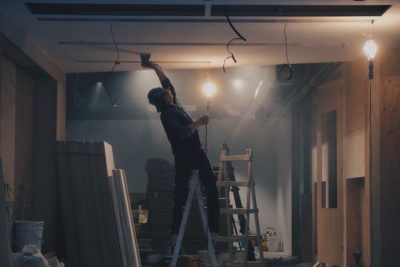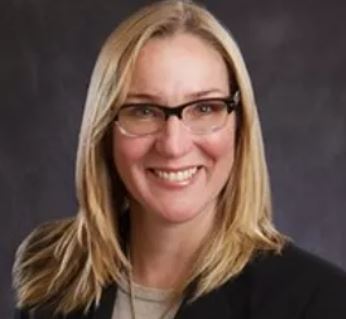Things are on track to get a whole lot weirder when it comes to finding a place to live in Chaffee County. But as of March, we may have officially entered the Epoch of Incredulity – one of the things Charles Dickens mentions after the spiel about the best and worst of times.
On the one hand, according to local real estate experts, if you have a dwelling to sell, know that your place, statistically, will survive a scant four median days on the Multiple Listing Service (MLS). There is a likely buyer (or five) who will pay cash. There’s a good possibility the settled amount will be above asking price, and your buyer may well be among the confident, moneyed dealmakers from afar who make their purchases sight unseen.

Housing is tight and if you’re building, materials costs are off the chart. Photo: Henry & Co./Unsplash
The downside? If you sell your residence, you may not have anywhere to land, especially if you want to land in Chaffee County or anywhere else in Colorado’s high country. At its best this is an exercise for people who own more than one place to live.
“I think the biggest issue we’re seeing is that there’s zero inventory,” said Shawn Allison, a broker associate with First Colorado Land Office and consultant with the local Small Business Development Center.
To be fair, the current number is slightly above zero, but not by much. As of April 23 there were 18 buildings listed with a Salida address. One of them is in Turret, the former mining enclave that is routinely called a ghost town. People who aren’t ghosts travel 13 miles of dirt road to get to Salida.
Two of the properties on the market are what Allison calls distressed, one is a new construction condo and four are commercial properties. That leaves 13 regular houses. The range for habitable dwellings is anywhere from $520,000 to $2.3 million.
In other words, the market isn’t for everyone. “For people to consider $500,000 to $750,000 for a first-time home, it’s crazy,” Allison said.
According to statistics from Realtors of Central Colorado, the average closed price in March for a home in Chaffee County was $639,163, a 40 percent increase year over year and a 16 percent increase month over month.

Image: Realtors of Central Colorado
Looking back, Allison said that three years ago, homes in Salida’s close-to-downtown walking corridor were selling for $275,000 to $350,000. This means that prices on some homes have doubled in just three years.
Thinking about renting?
If the quest to buy a place has you questioning your sanity, it can be infinitely tougher if you’re a renter and for whatever reasons are not going to consider buying.
The high country is seeing a continuing trend in which long-term rentals are evaporating as landlords decide to sell, short-term rent or just move in, and Chaffee County is no exception. Scramble as you may, there might not be anywhere for you to go if you lose your rental or want to find something else.
Micol Fowler is among those who saw their rentals disappear this winter. She said her landlord told her in January that he was taking her place out of the rental pool, meaning that she would have until her lease expired in June to find something. A 40-year local, Fowler scoured every source she could to find something, and ultimately found a place in Buena Vista on April 20. She said she’d decided she would have to move out of the area if she didn’t have something secured by May 1.
Fowler’s new place is $300 more a month than her current arrangement, but it’s larger and she said she might consider getting a roommate. She said it’s hard to think in those terms, seeing as she used to own a house in town near the high school. She and her husband parted ways and two years ago they sold the house, which she said has likely doubled in price if it were to sell again. She was a landlord herself when she moved out of town for awhile and rented out the Buena Vista house.
“It’s really heartbreaking to me that housing has become almost unattainable for the locals,” she said. “There are all these Airbnbs and whatnot, and it almost feels like locals don’t want to rent to locals anymore. It’s all about the money.”
Fowler, who lived temporarily in a travel trailer upon returning to Chaffee County, said she has looked a bit into buying something, including at The Farm, which is rolling out its second phase of attainable housing in Buena Vista. She saw a place there advertised in the mid-200’s – substantially lower than any prices mentioned here – but said it was still out of her budget.
She said she had been approved for HUD Section 8 housing assistance, but contends the stigma attached to it wasn’t opening any doors with potential landlords.
Her daughter, a fourth-generation Chaffee County resident, has deep roots here and a lot of stories about ancestors who helped build this place. But Fowler doubts she’ll be able to come back from college and reestablish those roots. “At the rate that it’s going right now, she won’t be able to settle in BV. It’s becoming unrealistic.
“I’m not looking to cause any community drama,” she emphasized. “I just want us to be a tight-knot community again.”

Chaffee County Director of Housing Becky Gray. Photo Courtesy Chaffee County Housing + Health Initiative
Chaffee County Director of Housing Becky Gray says that on the one hand, sellers are seeing the “American real estate dream.” But on the other hand, tenants are seeing their leases end early or not get renewed; the former sometimes being the case of renters not knowing their rights.
“These tenants have few, few options,” she said. “And those on fixed incomes have very limited options.”
Gray added that the mix of housing here, whether for purchase or rent, is simply beyond the means of most workers. “If you look at what’s being built here, it’s making our housing crisis much worse,” she said, adding that there are “double-digit wait lists” for affordable rentals in roughly five housing complexes.
The pressures that come with losing one’s rental are immense, Gray added. Renters end up in what she calls “places not meant for human habitation” or move into an overcrowded situation in order to afford the rent. In some cases, she said, long-term tenants undergo a “cultural shift” when they lose their single-family residence. “They have a hard time envisioning themselves in a small condo,” she said.
With most rentals requiring first and last months’ rent plus a deposit, Gray said renters can easily shell out $6,000 to move into a place, and sometimes that’s as much as $10,000.
“It’s tough,” she said.
For those who find a place to rent but can’t quite pull together the numbers, the Chaffee County Housing Office has a rental-deposit guarantee program that provides a promissory note of up to $1,500 to landlords and allows the renters to repay the deposit interest-free. “It doesn’t solve the crisis,” she said. “It just eases the pain.”
While the seemingly obvious solution is to create more spaces for workers to live and do that as economically as possible, Allison said the cost of materials recently hit a level of insanity. As an example, he said, a commonly used OSB plywood sheet that sold for $9 last year is now going for $75. He said part of that is due to disrupted supply chains during the COVID-19 pandemic.
“It’s absolutely through the roof,” he said. As well, he noted that most builders here are a year or two out for availability, a matter that is partly driven by the shortage of local laborers. And that loops back to the lack of housing.
Gray says the situation requires commitment and tough conversations. Like many local officials, she says the demand is going to outrun any corrections in the market that might make housing more affordable and available.
“We’re never going to fill that demand by using market-based approaches,” she said.






Well reported and written (if depressing) article, Tara. Thank you.
About a year and half ago, I was given (barely) one month to evacuate where I’d lived for twelve years. The plan was to turn the place (a house, downtown, with five single-room apartments) into condos. Well, that buyer flipped the house—I don’t know what the current owner’s plans are, but the renovating has continued.
We’ve gotten into a vicious cycle where “affordable housing” has become a four-lettered word, something folks seem to agree is needed, so long as it’s not in their neighborhood. Local wages being what they are (paltry) doesn’t improve the situation whatsoever.
Fortunately for myself, I was able to find a place, still within my budget, via word-of-mouth and Salida Sorcery.
In my not-so-humble opinion, this has to be taken seriously. Either pay your employees enough to actually live here, or make it feasible to do so, with what they’re being paid. Further, we don’t need anymore condos, VRBO, AirBNBs, or any other high-profit configurations. If we still want people to work for us, to take care of us when we eat/drink out, we need to bring enough money to bare that allows those folks to be able to live here.
One way or another, Put your money where your house is, people.